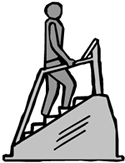Exercises
 1-1. Consider an application that will be used to schedule conference rooms in an office. The application has a graphical user interface that allows a user to indicate a date, a time of day, and a duration (in fifteen-minute increments). It then shows a list of conference rooms available at that time and allows a room to be reserved. The system also allows a user to cancel a room reservation. The project is to be developed incrementally that is, in increasing amounts of functionality. Consider the following two plans. Which is more likely to succeed? What testing can be done at the end of each increment?
1-2. Make a list of the features in the object-oriented programming language(s) your company is using that have no counterparts in a language used previously. Next to each feature, jot down how you might approach testing software that's using your specific language. 1-3. If you are currently working on a project, identify increments or major milestones. Some of them might be informal. Think about the testing activities that you can do during each increment and what you can test at the end of each. |
EAN: 2147483647
Pages: 126